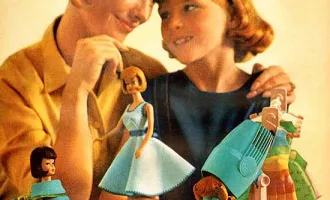Summer in the Tenderloin: Health Begins at Home
Nurses are often portrayed as hospital clinicians, and are seldom seen as public health administrators who make house visits to assess their patients’ health care needs and see that their medications are properly taken.
They brave the Tenderloin area early in the morning, although not always to deliver the care that nurses are typically expected to furnish. Here, rather than in formal, sterile environments with pristine equipment, they work in transitional housing units called SRO, or single-room occupancy hotels.
For a nurse visiting for the first time, it can be shocking to see these living quarters. The problems the patients face on a daily basis are almost overwhelming. They face a Sisyphean cycle of combating chronic ailments and finding resources that are often hard to come by, as they try to muster enough energy and courage to get through the next day.
San Francisco’s Tenderloin has had a notorious history of drug-related activity, and the SROs in the area now offer housing for the homeless. It is intimidating to enter these SROs, not because of the people who live there, but because of the lack of cleanliness and upkeep.
We often encountered trash along the hallways, sometimes an empty syringe or open trash receptacles that hadn’t been emptied in a while. There were bulbs that needed to be replaced, and windows that could have used some cleaning.
As you enter most of these buildings, you are immediately greeted by a foul and rancid smell emanating from the dilapidated carpeting, which is generally of a dark hue that hides the dirt embedded in its fibers. I could only imagine what it would be like to trek down these hallways on a rainy winter day.
The walls are covered with grime and the ceilings with soot and lingering cobwebs. The walls are devoid of any pleasing pictures or artwork that could provide some relief from the overwhelmingly bleak surroundings.
Sometimes, we could not enter a patient’s unit because there simply was not enough room for three people. The nurse would thus have to do the assessment outside, where the lighting was usually better, while carefully trying to ensure some level of privacy for the client.
While driving to our next visit, we passed by the Kelly Cullen Residence, the old YMCA building that was converted into affordable housing for the homeless. Its namesake was a Franciscan monk and activist who found refuge in helping and caring for Tenderloin residents.
“We need to see our patients in more buildings like that,” said the nurse in his slightly lilting Irish accent. Two visionaries — one voice.
There is a responsibility that should tie people together when they see others suffering. Just knowing about it is not good for one’s health. Yet in the midst of modern life, one seldom sees smiles cast onto a passing shadow. In the recesses of The City’s spleen, I witnessed them at every greeting — showing the resiliency of human frailty.
Supportive housing for chronically ill, homeless people has been shown to cut the costs of their care for other medical sectors, relieving overburdened emergency rooms, and reducing in-patient hospitalizations, ambulance usage and psychiatric intakes, just to name a few of the medical interventions they might require.
More importantly, case management within the housing residences can provide encouraging results, as well as contribute to community health and strength.
We can move away from the “lost cause” paradigm by helping human beings to participate in opportunities for community-building and to contribute to society. People are still suffering on the margins of society, and it is not always easy for the arms of medicine to reach and embrace them.


